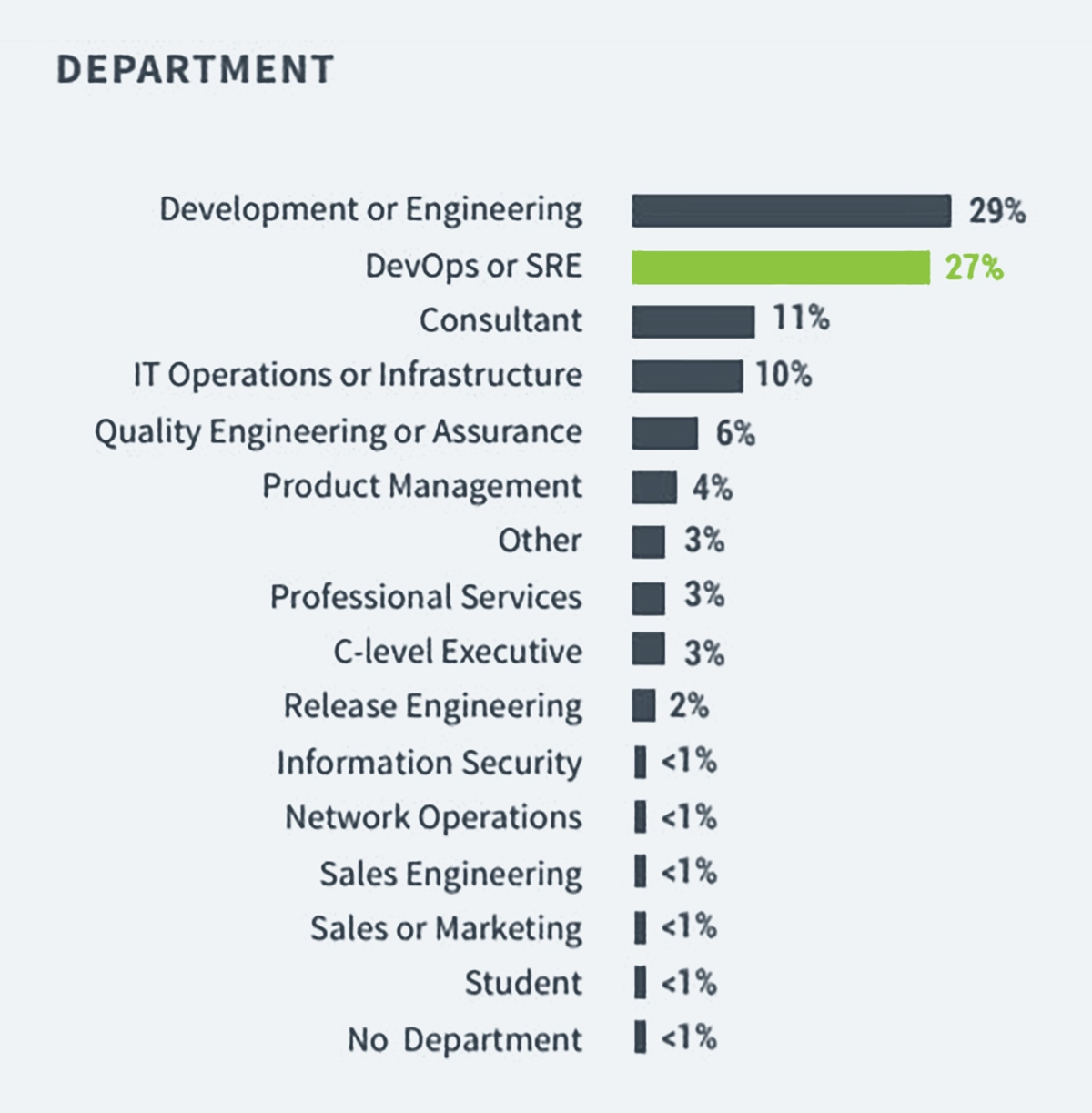DevOps idea appeared in IT field already in 2009 and since then, it has been systematically entering global business world as a method of running software development projects. After over 10 years, we know that DevOps bring measurable benefits, improving the efficiency of applications development process.

That’s the end of the era of fixed divisions into teams and subteams working on particular parts of projects and building figurative walls between specialists. Currently, the most important place is taken by teamwork and cooperation, which guarantee better communication in a company, more efficient problem-solving and employee involvement. Introducing DevOps idea into an organization requires the implementation of the right tools and normalization of the work environment. It’s a complex and time-consuming process, but it’s worth the effort.
How is DevOps doing?
According to the data gathered by Atlassian in a report „DevOps Maturity” in 2017, over 65% of companies which have implemented DevOps idea in their teams recorded significant benefits. Among those, there are i.a.: shorter time of software release, better matching between product and client’s expectations, faster reaction to errors and efficient implementation of innovations. Some companies are introducing DevOps idea step by step, starting with common tools which are used by both developers and operational teams – 80% of respondents have chosen this answer. Similar observations have been indicated in reports by Puppet and Slunk.

Source: State of DevOps Report 2018 by Puppet and Splunk
The increase in interest in DevOps has been recognized in this year’s report „State of DevOps 2018 Strategies for a New Economy”- it’s worth adding here that the research has been carried out since 2013 and included approximately 30 thousand answers. It has been observed over the years that the number of people hired in DevOps teams, taking part in the research, increased. It was consequently: 16% in 2014, 19% in 2015, 22% in 2016 as well as 27% in 2017 and 2018.

Source: Accelerate: State of DevOps 2018 Strategies for a New Economy
DevOps is slowly becoming a natural choice of companies for the way how developer teams work. The process is time-consuming mostly because of a huge number of changes and improvements requiring implementation in order to transfer optimally to the work according to the DevOps model.

Source: State of DevOps Report 2018 by Puppet and Splunk
TT PSC is one step ahead
Transition Technologies PSC is not only up-to-date with trends and their implementation in its teams, but also moves a step ahead and offers their implementation in clients’ companies. There is an Atlassian department which handles that and specializes in implementation and services connected with tools which improve work quality.
DevOps relates to cooperation between developers and the other members of operational teams which create applications. Its main idea is teamwork and involvement of all specialists at every stage of a project. In our case, DevOps means a set of tools which makes it possible for the company to change an idea into something real, as well as knowledge that comes from work according to the model.
Piotr Tokarski
Competence Center Direcor, TT PSC
During the recent Atlassian DevOps MasteryCamp in Amsterdam, TT PSC representatives- Magdalena Kwaczyńska (business analyst) and Daniel Chwaszczewski (DevOps Coordinator), found out why and in what way it is worth informing clients about benefits that work according to DevOps bring.
The main goal of the workshop was to treat Atlassian tools as a natural consequence of introducing DevOps idea in a company. The participants were divided into groups consisting of 6 people each and received a 3-step task whose aim was to build a relationship with a client, implement solutions which made it possible to work in a DevOps form in a small team, and next, to implement the solutions in the whole company.
Magdalena Kwaczyńska
Competence Center Manager, TT PSC
DevOps stands for:
- SIngle, common work environment;
- The same project management process (model) for all specialists, who compose one team;
- Work automation – the implementation of tools that carry out repeatable activities;
- Step-by-step policy; implementing projects gradually;
- Relying on users’ opinions and introducing adequate modifications;
- Teamwork and engagement at every stage of the project – you build it, you ship it, you run it.

Jira and other Atlassian products created for DevOps
Atlassian can be suited to any industry; the company’s range includes solutions dedicated to software development teams. Fully compatible with one another, they compose a cohesive work ecosystem and perfectly meet the assumptions of work in the DevOps model.
Jira Software – a system designed for teamworking on a code; excellent for the agile and waterfall methodologies. Appreciated mostly for enabling functionality customisation and for its easy and intuitive use. Project management and planning with Jira is clear and, most of all, effective. Development teams can also use other tools that facilitate software development:
Bitbucket – enables code management in the Git repository.
Bamboo – enables streamlined compilation and integration of code even in extremely extensive projects.
Crucible – designed for reviewing and correcting the code in SVN, Git, Mercurial, CVS, and Perforce repositories.
Fisheye – a tool that makes it easier to catch errors and differences between various code versions.















